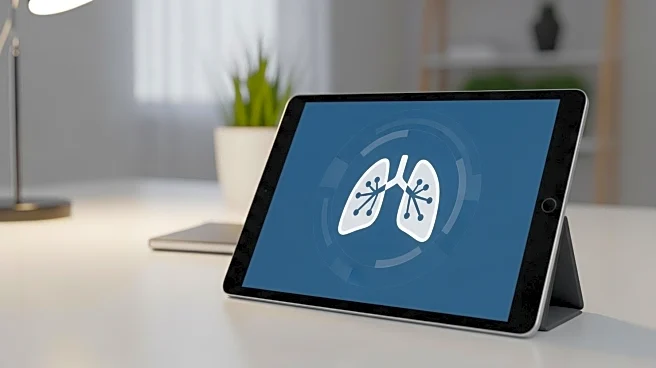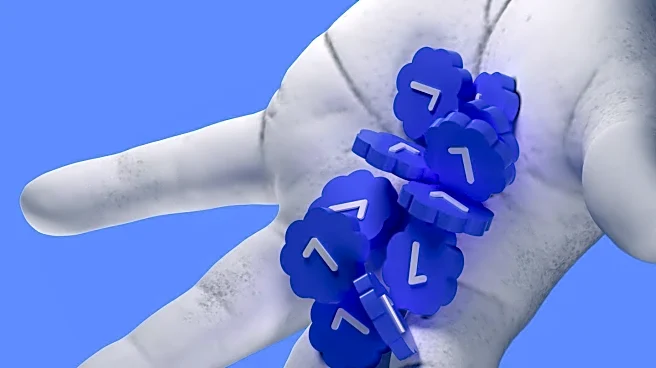What is the story about?
What's Happening?
electronRx, a UK-based company, is set to launch a digital health technology platform named pDx at the HLTH 2025 show in Las Vegas. The platform is designed to help patients with respiratory diseases manage their conditions at home. pDx builds on electronRx's existing purpleDx technology, which uses smartphone cameras to measure blood flow changes as digital biomarkers for respiratory metrics. The new platform offers additional features, including tailored questionnaires and real-time results, and can be used on various devices. It aims to improve remote patient monitoring, assist in clinical development, and reduce healthcare burdens by providing continuous insights into lung function.
Why It's Important?
The introduction of pDx could significantly impact the management of chronic respiratory diseases, which are a leading cause of death globally. By enabling continuous monitoring and personalized care, the platform may improve patient adherence and outcomes while reducing the need for in-person visits. This technology could also streamline clinical trials for respiratory therapeutics, potentially shortening study durations and reducing costs. As healthcare systems face increasing demands, innovations like pDx offer scalable solutions to enhance patient care and optimize resource use.
What's Next?
The launch of pDx at the HLTH 2025 show will likely attract attention from healthcare providers and industry stakeholders. As the platform becomes available, electronRx may seek partnerships with healthcare organizations to integrate the technology into existing care pathways. The company will also focus on expanding the platform's capabilities and exploring new applications in respiratory care. Stakeholders will monitor its adoption and effectiveness in improving patient outcomes and healthcare efficiency.
Beyond the Headlines
The use of digital health technologies like pDx raises questions about data privacy and the potential for over-reliance on technology in patient care. Ensuring secure data handling and maintaining a balance between technological and human elements in healthcare will be essential. Additionally, the platform's ability to provide continuous monitoring may shift traditional healthcare practices, prompting discussions about the future of patient management.
AI Generated Content
Do you find this article useful?















